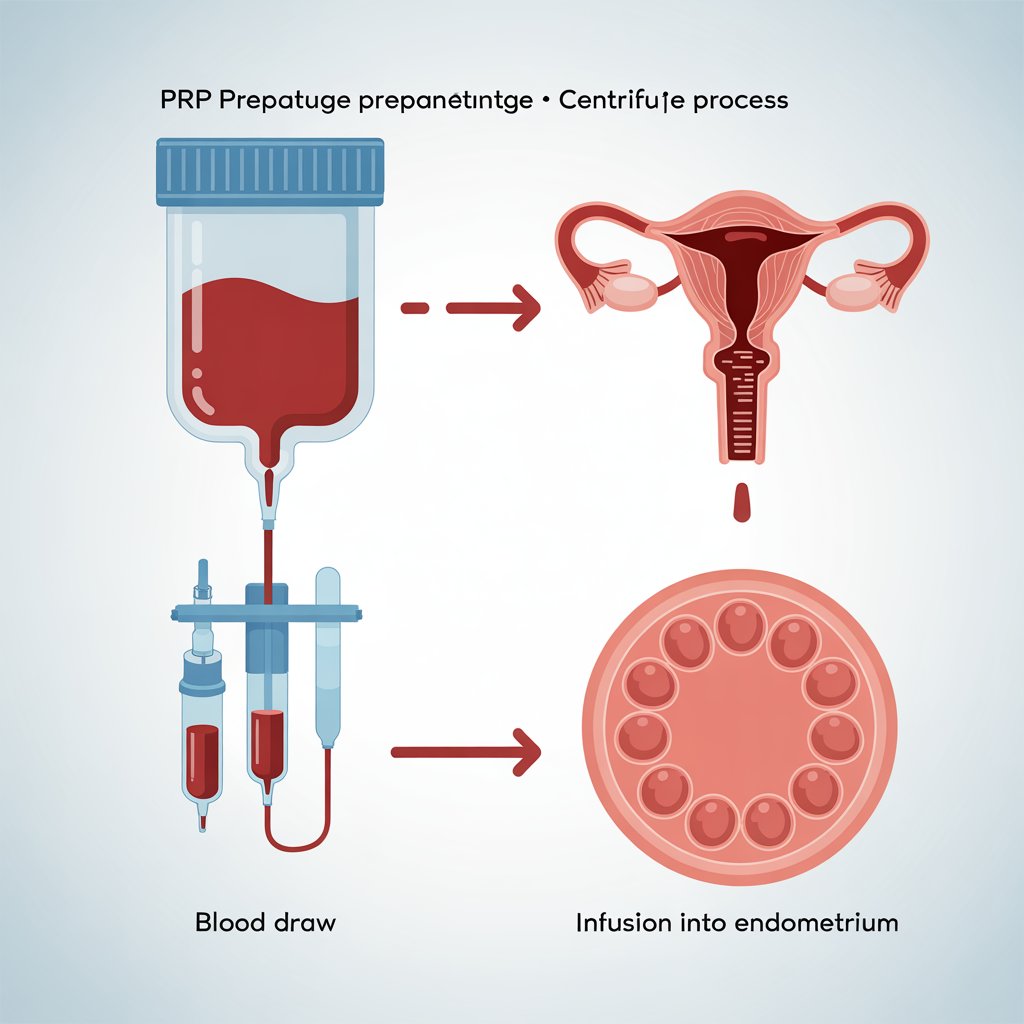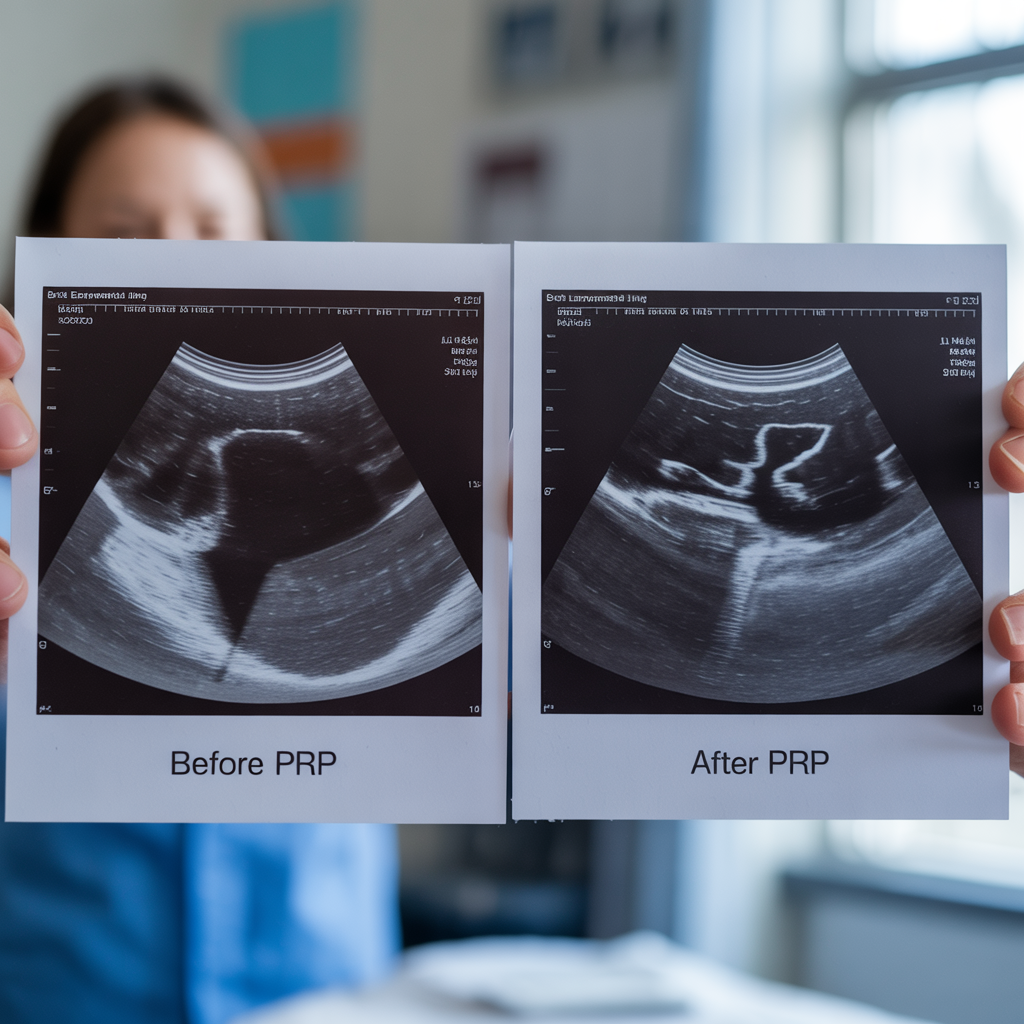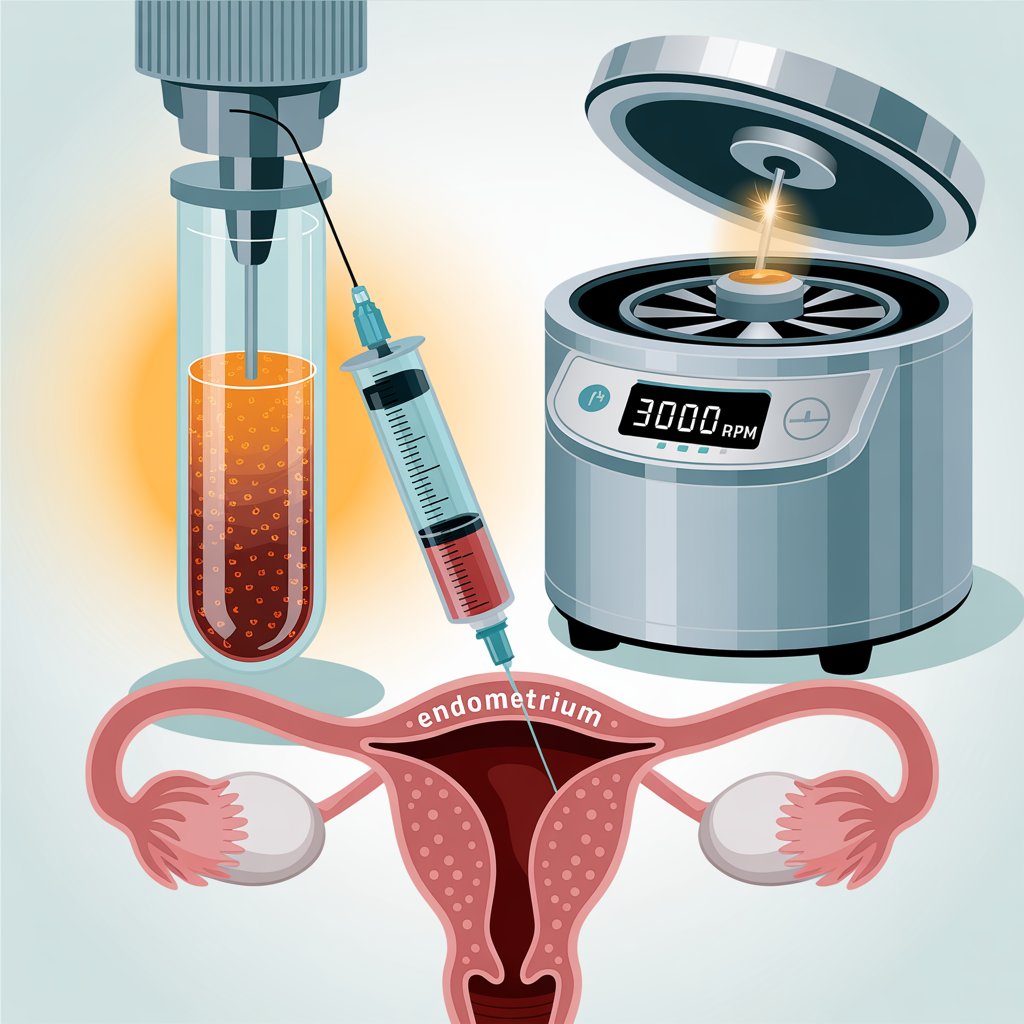📖 Introduction
Platelet-Rich Plasma (PRP) is generating real excitement in reproductive medicine—particularly for women with poor endometrial receptivity or low ovarian reserve.
But what is it exactly? And what does current science have to say?

🧪 What is PRP?
PRP is a concentrated solution made from your own blood, rich in platelets and growth factors that promote cell repair and tissue regeneration.
Originally used in sports medicine and orthopedics, PRP is now making waves in fertility care.
👩⚕️ How is PRP Used in Fertility Treatment?
There are two common uses of PRP in reproductive medicine:
- Intrauterine PRP Infusion
Introduced into the uterus to support endometrial growth in women with thin linings. - Ovarian PRP Rejuvenation
Injected into the ovaries to improve follicular response in women with low ovarian reserve or signs of early menopause.

💡 Who Might Benefit from PRP?
PRP may be helpful for women who:
- Have a persistently thin endometrial lining
- Have experienced repeated implantation failure
- Are diagnosed with low AMH or diminished ovarian reserve
- Are approaching or undergoing early menopause
PRP is not a standard treatment yet, but it’s offering hope to many women who previously had limited options.
🔬 What Does the Evidence Say?
Research on PRP in fertility is still evolving. Early studies and case series have shown:
- Improved endometrial thickness in women with thin linings
- Better implantation and pregnancy rates in women undergoing IVF
- Improved ovarian hormone levels in some low-responder patients
But it’s important to remember:
PRP is not a miracle cure—results vary, and it is best used in combination with other personalized treatments.

🌱 Final Thought
PRP represents a promising, minimally invasive addition to the growing field of personalized fertility care.
If you’re exploring options like PRP, speak with a fertility specialist who understands the latest science and your unique journey.
Every step you take toward parenthood deserves careful thought—and hopeful possibilities.



Leave a Reply